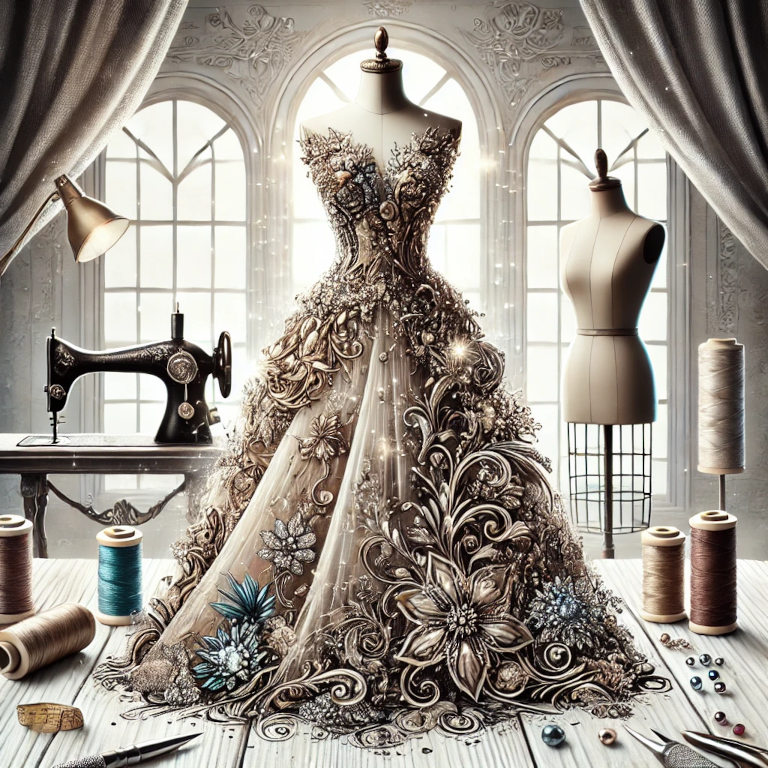Couture fashion, often seen as the pinnacle of the fashion industry, represents the height of luxury, artistry, and bespoke craftsmanship. As an expert in Fashion and Beauty, I will take you on a journey through the world of couture fashion, exploring its significance, intricate processes, and the elements that set it apart from ready-to-wear collections. This article aims to provide a comprehensive understanding of couture fashion and its unique place in the fashion world.
Understanding Couture Fashion
Couture fashion, or haute couture, refers to the creation of exclusive, custom-fitted clothing. These garments are meticulously crafted by hand from start to finish, using the finest materials and techniques. The term “haute couture” is protected by law in France and can only be used by fashion houses that meet specific criteria set by the Chambre Syndicale de la Haute Couture.
The Importance of Couture Fashion
1. Artistic Expression: Couture fashion is an art form that allows designers to push the boundaries of creativity and innovation. It is a platform where fashion meets art, resulting in unique, one-of-a-kind pieces.
2. Craftsmanship: The creation of couture garments involves exceptional craftsmanship. Skilled artisans, including pattern makers, seamstresses, and embroiderers, dedicate hundreds of hours to perfecting each piece.
3. Exclusivity: Couture fashion is synonymous with exclusivity. Each garment is made-to-measure for a specific client, ensuring a perfect fit and unparalleled personalization.
4. Influence on Ready-to-Wear: Couture collections often set trends and influence the broader fashion industry. Elements of couture designs trickle down to ready-to-wear and fast fashion, shaping global fashion trends.
5. Cultural Heritage: Couture fashion houses preserve and promote traditional craftsmanship and techniques that have been passed down through generations. These practices are a vital part of the cultural heritage of fashion.
The Couture Creation Process
1. Design and Inspiration: The process begins with the designer’s vision and inspiration, which can come from various sources such as art, history, nature, or personal experiences. Designers sketch their ideas, creating a blueprint for the collection.
2. Fabric Selection: Couture garments are made from the highest quality fabrics, often sourced from specialized mills. Fabrics like silk, velvet, lace, and tulle are commonly used. Embellishments such as embroidery, beadwork, and sequins are carefully chosen to enhance the design.
3. Pattern Making: Skilled pattern makers create precise patterns based on the designer’s sketches. These patterns serve as templates for cutting the fabric.
4. Construction: The garment construction involves cutting the fabric, basting, fitting, and hand-sewing. Each piece is meticulously assembled, with attention to every detail. Multiple fittings ensure that the garment fits the client perfectly.
5. Embellishments: Many couture garments feature intricate embellishments. Artisans spend countless hours hand-sewing beads, sequins, and embroidery to create stunning, detailed designs.
6. Final Touches: After the garment is constructed and embellished, final touches such as hemming, pressing, and quality checks are performed to ensure perfection.
Renowned Couture Fashion Houses
1. Chanel: Founded by Gabrielle “Coco” Chanel, this iconic fashion house is known for its timeless elegance and innovative designs. Chanel’s couture collections often feature classic silhouettes, luxurious fabrics, and exquisite detailing.
2. Dior: Established by Christian Dior, this house revolutionized fashion with the “New Look” in 1947. Dior’s couture collections are celebrated for their romantic, feminine aesthetics and meticulous craftsmanship.
3. Valentino: Valentino Garavani’s namesake brand is synonymous with glamour and sophistication. Valentino’s couture pieces often feature intricate lacework, bold colors, and elegant drapery.
4. Givenchy: Founded by Hubert de Givenchy, this house is renowned for its chic, modern designs. Givenchy’s couture collections blend classic elegance with contemporary style.
5. Elie Saab: Known for his opulent, red-carpet-worthy gowns, Elie Saab’s couture collections are characterized by luxurious fabrics, intricate beadwork, and flowing silhouettes.
How to Appreciate Couture Fashion
1. Understanding the Craftsmanship: Recognize the skill and effort involved in creating couture garments. Appreciating the hours of handwork and the expertise required adds to the value of these pieces.
2. Attending Couture Shows: If possible, attend couture fashion shows or watch them online. These events showcase the latest collections and provide insight into the designer’s vision and creative process.
3. Learning the History: Explore the history and evolution of couture fashion. Understanding the legacy and impact of renowned fashion houses enhances your appreciation of their work.
4. Supporting Artisans: Acknowledge and support the artisans and craftsmen behind couture creations. Their skills are integral to maintaining the high standards of couture fashion.
Summary
Couture fashion is a celebration of artistry, craftsmanship, and exclusivity. It represents the pinnacle of fashion, where designers create unique, custom-fitted garments that embody creativity and luxury. By understanding the intricate processes involved in couture fashion and appreciating the skill and dedication of the artisans, we can gain a deeper appreciation for this remarkable facet of the fashion industry. Embrace the world of couture fashion to experience the ultimate in style, elegance, and innovation.






